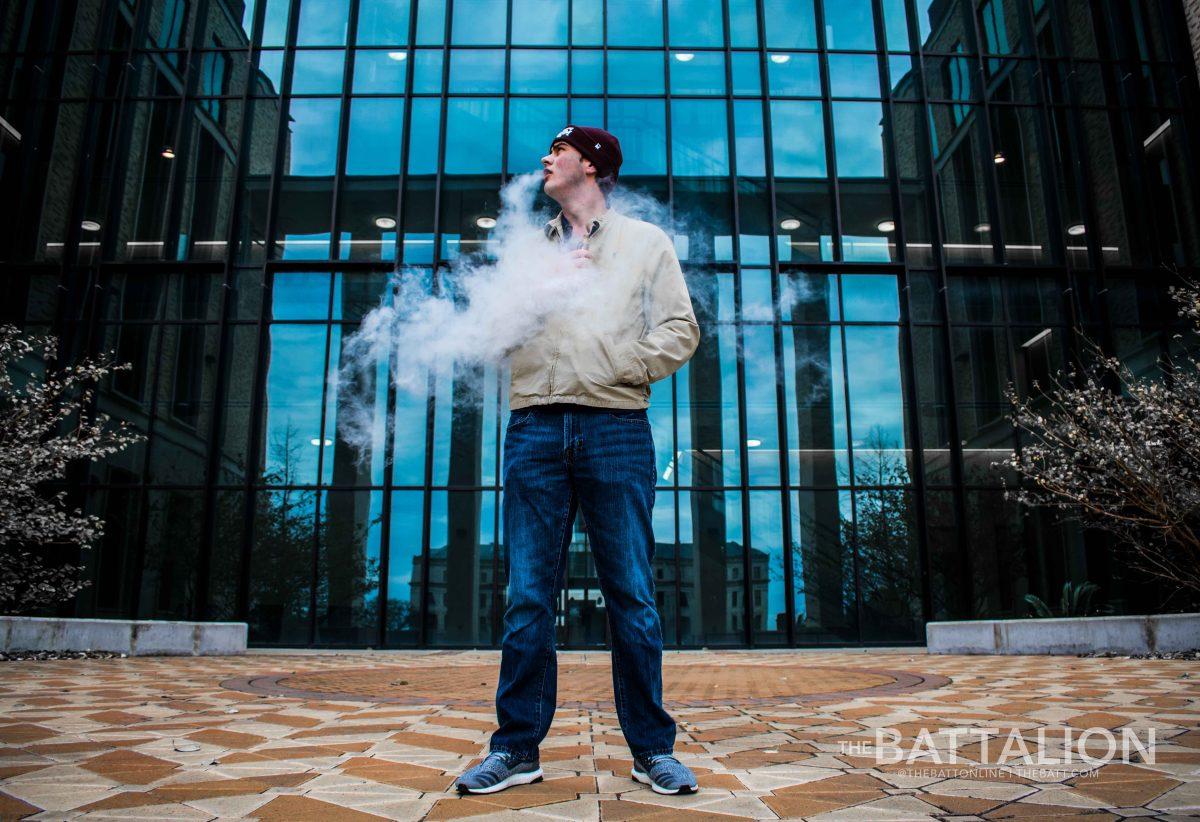Cigarette smoking is the leading cause of preventable illness and death in the United States. A significant number of studies have shown that tobacco can lead to disease and harms nearly every organ of the body. Every year in the U.S., there are more than 480,000 deaths from tobacco use and over 41,000 deaths due to exposure to secondhand smoke. The direct medical care for adults due to smoking-caused disease is nearly $170 billion.
Given these facts, on Jan. 1, 2020, Texas A&M became a smoke-free and tobacco-free university, as President Young announced on Dec. 10, 2019. Also, the State of Texas raised the smoking age from 18 to 21, making tobacco illegal for many A&M undergraduates.
About six million U.S. middle and high school students were tobacco product users in 2019, according to a report by the Centers for Disease Control and Prevention (CDC). Among the tobacco products, most commonly used are e-cigarettes. Moreover, teens who vape are more likely to start smoking cigarettes. Many studies have already shown that vaping could harm the body significantly.
One important reason is the e-cigarettes with various fruit flavors are much like candy instead of smoking products. For example, JUUL, a flash drive-like vape device, looks concise and neat. Its vape devices can be charged in a USB port. However, cool looking does not guarantee safety. Reports show that vape devices deliver high levels of nicotine, making the product extremely addictive.
Accordingly, I found many valuable resources can help people with smoking and tobacco cessation. For everyone, there is a Texas Tobacco Quitline by the Texas Department of State Health Services. It provides coaches, self-help booklets and other support programs both in community and online. For students, the Office of Health Promotion has a variety of resources to help students quit vaping or smoking. For faculty and staff, the Employee Assistance Program provides free counseling services.
With so many resources available, why do we still see people vaping?
After talking with students in the College of Engineering, some undergraduates told me they are good with the non-smoking policy since they only come to campus for classes. After class, they just go home and smoke. However, some graduate students think the policymaker does not know the reality of how much stress they are suffering. Given the long hours graduate students work on campus, smoking is one of their limited ways to relax. Some smokers in faculty positions follow the policy with their counter measurements. Given the College of Engineering is close to the north boundary of campus, faculty just “go out” to smoke and then “return” to work.
Students and faculty show a desire to quit smoking, but they just cannot. They told me that they know there are resources for cessation, but do not believe the resource could help even though they never tried. Thus it is significant to fill the gap between the smokers and resources, to enhance smokers’ trust of our resources for cessation, and motivate smokers to seek help from our resources for quitting smoking.
Recreational users tend to smoke as a social exercise or for the psychoactive effects, while the brain of addicts drives them to use nicotine products regardless of quitting support. In summary, strong motivation, both internal and external, is a must for successful cessation.
The university should provide more workshops where the people who have successfully quit smoking have an opportunity to share their experience. A&M should establish a Smoke Cessation Day. On that day, various activities should be performed. Such as a magic trick on a vape on campus, flyers about The Real Cost website. Student health centers should provide more self-help booklets, which contains, for example, the information about relation between smoking and health, resources for cessation both on campus and from the state of Texas. They should have more non-smoking signs on campus, especially in the loading zone by some buildings. The university can establish a campus-wide notification system like the Crime Alert which will send an email regarding the date, time and location of a smoking case. To treat non-smoking seriously, do not let people think this is a loose rule.
Addicts are psychologically compelled to use some of these nicotine products, and it is not easy to break the dependence on nicotine. Research on the relationship between number of smoking friends, intentions for quitting and success shows that the success rate of quit smoking is higher if the people live and work in an area where smoking is not allowed. Hence, when recreational users stop smoking, addicts will have a higher success rate to quit smoking, both from intrinsic and extrinsic motivations.
As a university, we should not limit our goal to bans on tobacco. A more substantial responsibility should be to convince smokers to seek help and eventually quit smoking. For the tobacco-free policy, we should focus more attention on filling the gap between smokers and the resources. We need a bridge to link them. Do not let this policy stand only on paper.
With bans, build the bridge between smokers and resources
March 15, 2020
Photo by FILE
Currently, e-cigarettes and other vaping products are included in Texas A&M’s smoking and tobacco policies, and they can be used in some designated areas around campus.
Donate to The Battalion
Your donation will support the student journalists of Texas A&M University - College Station. Your contribution will allow us to purchase equipment and cover our annual website hosting costs.





















